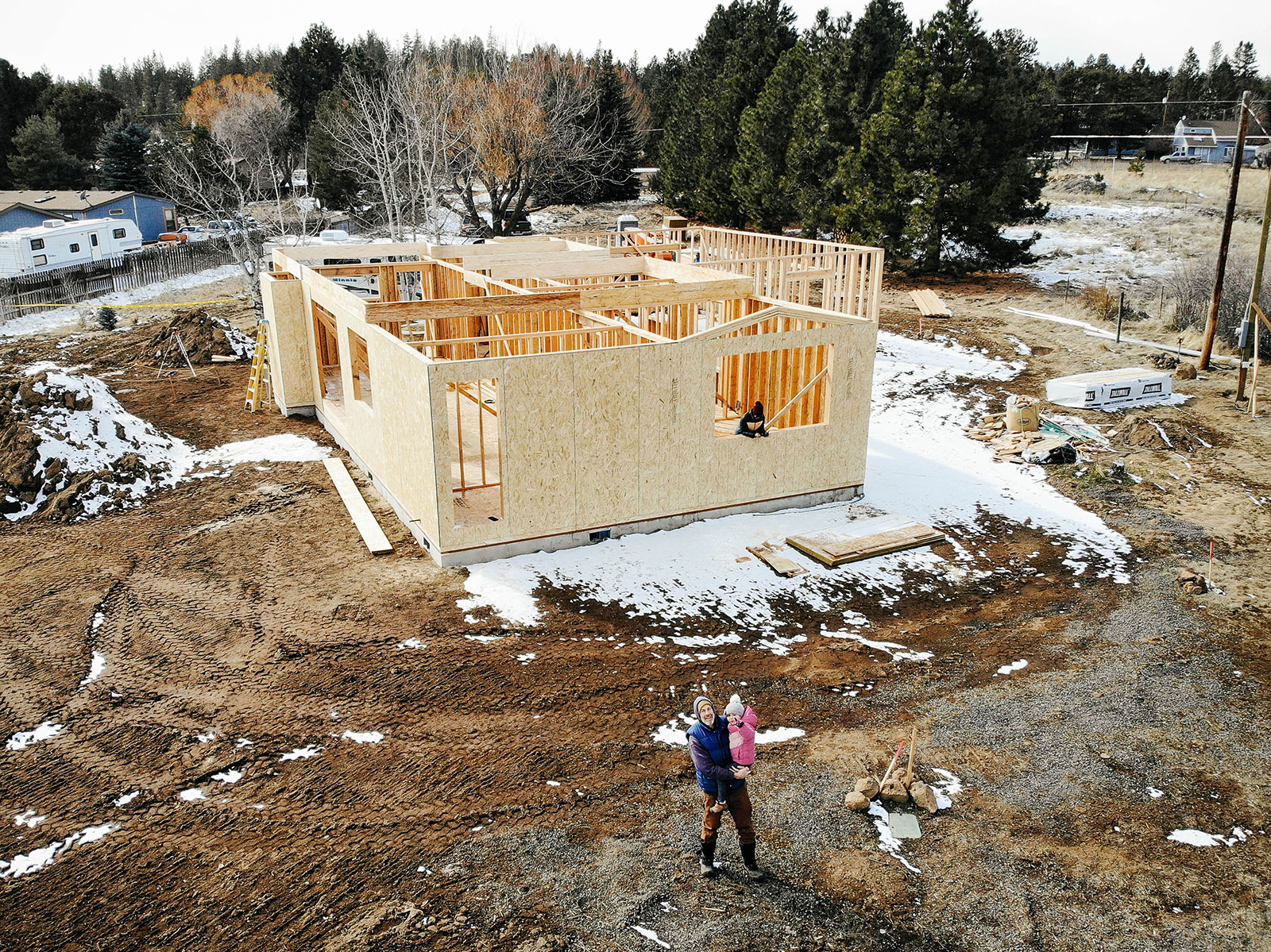So you can’t buy your dream house… but maybe you can buy your dream land.
This was the realization that my husband and I had in 2018 after more than a year of unsuccessful house hunting. We were searching in a challenging market, hoping to score the unicorn of real estate: a fixer-upper with good bones, on a wide open, beautiful property with plenty of space to create a homestead, all on a budget we could actually afford once we factored in remodeling costs.
That fixer-upper didn’t exist in Bend, Oregon—at least not without spending an exorbitant amount of money just to settle for something. So we switched gears and decided to look for land.
Our reasoning: We would spend nearly the same amount of money remodeling an old house as we would building a brand-new house. The math was all in favor of custom building, and we’d have our dream house on the first go-round.
It’s an enticing proposition, but buying land isn’t quite as straightforward as buying a house. (Never mind actually building the house—but you can follow my series, Garden Betty Builds a House, to watch it all unfold.)
Once we decided to focus our search on land, it took another eight months before we found the perfect property. In another post, I wrote more about how we found land (with tips on how you can find one too).
Today, I’m going to spell out exactly what you need to look for if you’re in the market to buy land (or if you’re simply curious about how we evaluated the land we’re building our house on).
1. What comes first, the land or the architect?
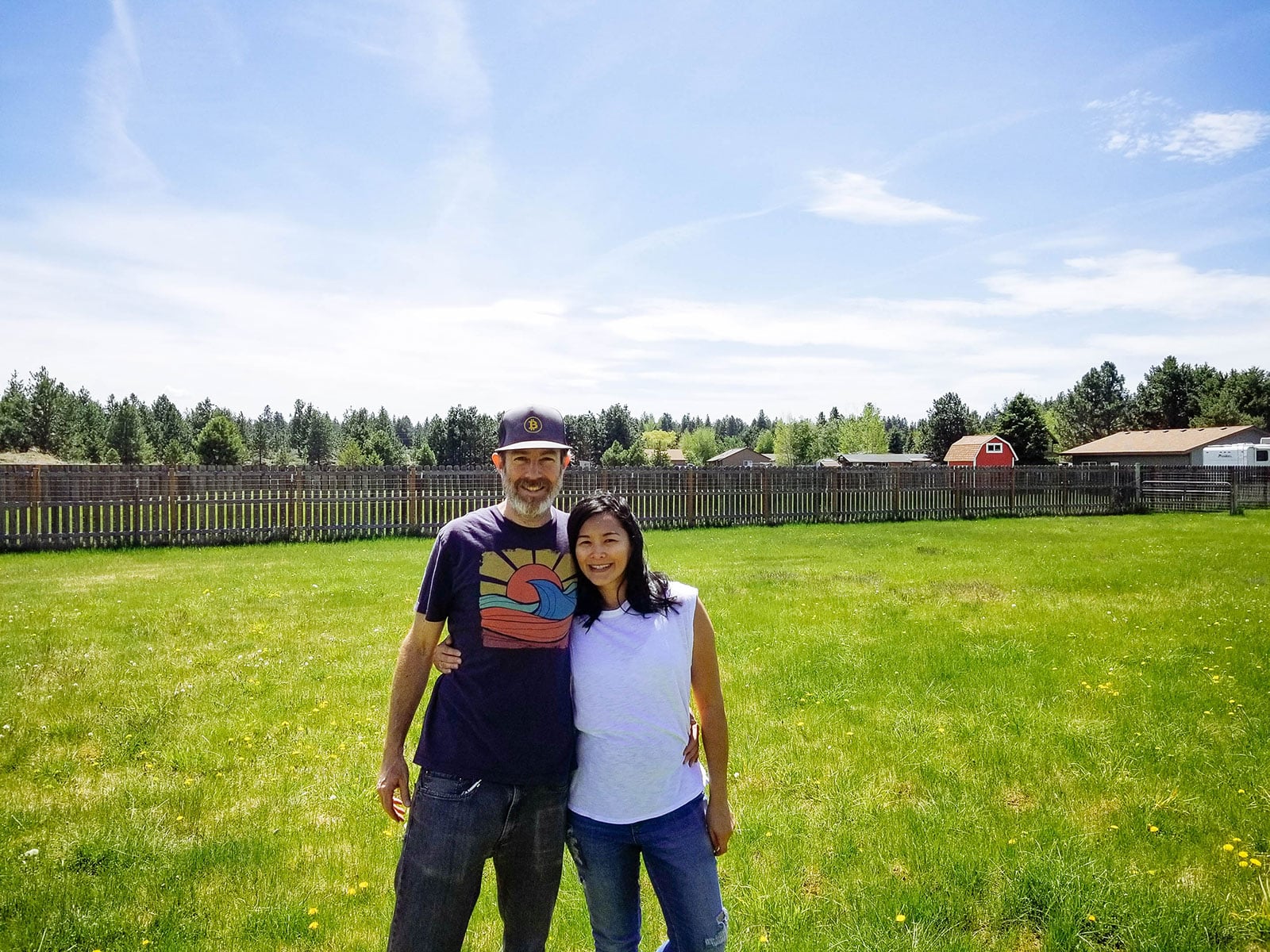
Well, it depends.
My husband and I went about our land hunt on our own. We had a specific type of land in mind (fairly level and open with few trees to clear) and a specific type of house we wanted to build (simple lines without a lot of cutouts) so we could avoid the expense of a complicated build. Because of this, we opted to find the land first and then interview architects while we were in escrow.
However, there are a few scenarios in which you’d want to choose your architect or builder first.
Your desired location is notoriously tricky to build on. If you live in an area that’s very hilly, densely forested, situated on a shoreline, or has similarly unique or tricky characteristics, you’ll probably want to enlist the help of an architect or builder before you start viewing properties.
By hiring a professional first, you can lean on their expertise to guide you toward better or less expensive options. A knowledgable architect or builder will be able to tell you whether the land is challenging to design around or build on, and hopefully steer you away from costly mistakes.
Your goal is to have the most energy-efficient home possible. If you ultimately want to achieve a net-zero home or one that meets certain energy-efficiency standards, it’s a good idea to start the journey with an architect or builder with experience in that industry.
The reasons are twofold: First, they can help you pick a parcel that will maximize energy-efficient building methods. Second, they can give you a better idea of how much things will cost on the construction side so you can properly budget for the land (and not waste time looking at properties you can’t afford to develop).
You want an expert and partner in the process and a full-service custom home experience. Does the thought of looking for land (and making sure it’s buildable) feel too daunting to tackle alone? Talk to a builder! Some builders prefer to be part of the plan from the get-go and will visit potential lots with you.
When you sign on with builder like this, they will help you find the right piece of land and may even offer in-house design and engineering services.
If this type of one-stop shop appeals to you, search for design-build firms. These full-service firms take on the roles of architects, contractors, and construction companies all under one roof, streamlining the process considerably since they overlap the design and construction phases of the project.
But even with a professional onboard, it’s always wise to know what you’re getting into.
Keep reading to learn exactly what you should look out for when buying land—including the stuff no one talks about!
2. Location and zoning
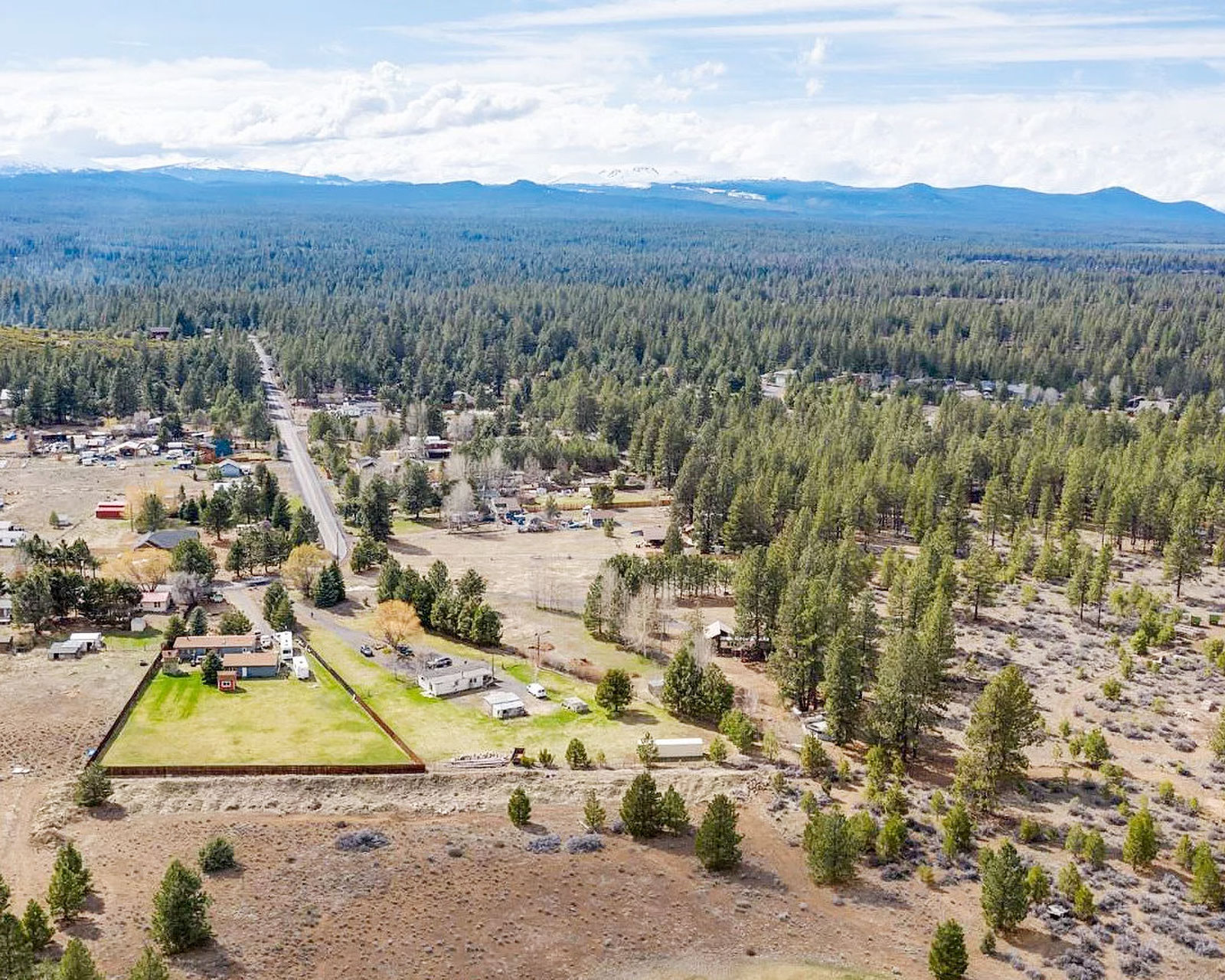
When doing your due diligence, the most important factor to consider before buying land is its location. In real estate, location trumps all other characteristics because, well, if you don’t love where you live (or realize it’s too complicated to build on), it doesn’t matter if you can afford it.
What municipality does the land fall under? Here in Bend, Oregon, land is either part of the City of Bend or part of Deschutes County, and each has its own set of building requirements, building fees, and public services (like road maintenance and mail delivery).
In our experience, land that fell outside of city limits was much easier and less expensive to develop, though it typically won’t appraise as high as land within the city. We generally enjoy lower taxes but aren’t allowed to vote on certain city ballot measures that may impact us. For us, the trade-offs were worth it for these and many other reasons.
Does the community have potential for future development? Not only should you consider where all your neighbors are, but where any future neighbors (and future roadways or developments) may appear in relation to your land.
What surprises a lot of new landowners is when they buy their plot and suddenly find out an apartment complex is going up across the street. Be sure to check what current zoning requirements are for your neighborhood, and don’t be afraid to talk to the neighbors (who often have little nuggets of information about what’s going on in the community).
Are there any zoning restrictions? Aside from finding out what’s allowed to be built in the neighborhood, you should also know what isn’t allowed. Certain zoning laws may restrict the type of house that can be built, the number of chickens you can keep, or whether you can add an ADU or other outbuildings on the property.
There will also be property setbacks you need to abide by, which can greatly affect the size and orientation of your house. In our case, we also had to consider the solar setback of our house, which dictated how high we could build on our lot.
Are there HOAs, CC&Rs, or deed restrictions? Zoning isn’t the only potential limitation for what you can build on your lot. If you’re buying land in a subdivision, there may be covenants in place that spell out the colors you can paint your house, the type of landscaping you can have, or the style of fencing allowed.
Not to mention, established communities may have membership or association fees that ultimately make your monthly mortgage too high.
Some subdivisions may also have deed restrictions about removal of trees, obstruction of a neighbor’s view, or parking an RV in your own driveway. Be sure to get copies of all these documents beforehand and read them carefully if you’re considering buying the lot.
What’s the neighborhood like? Sometimes this isn’t something you can determine right away, which is why I recommend visiting the property morning, day, and night to get a feel for the neighborhood. Visit it on the worst day if possible, when it’s full of localized traffic or after a big storm.
Look at how tidy (or not) the front yards are. Chat with neighbors walking their dogs and ask them what it’s like to live there. Let them know you’re thinking of buying land to build on. We’ve walked away from properties simply because of what we find out about the neighborhoods.
And really study what’s nearby (zooming into Google satellite view really helps here). Is there a landfill a couple miles away where the wind could blow a certain direction and make your home smell? Do the neighbors have a noisy motocross track in their backyard? Is there open space adjacent to the property where people are allowed to shoot?
Are you near any amenities? Time how long it takes to drive to schools, grocery stores, parks, trails, or your favorite spots. If you think you’ve found your dream property but it lengthens your everyday commute, be honest with yourself on whether that extra 30 minutes is worth it (especially if you live in a snowy climate).
3. Orientation and views

This is one area that many people don’t think too deeply about, but in my opinion, the orientation of the lot is everything (especially if you’re hoping to build an energy-efficient home).
What shape is the lot? A square lot will give you many options for building and landscaping, whereas an odd-shaped lot will be more challenging to develop.
Take our lot, for instance: It’s wedge-shaped, which meant there was really only one spot we could put our house if we wanted a large and sprawling backyard. Fortunately, we like having our house set farther back from the road, so the narrower end of the lot was perfect for our driveway.
What direction is the land oriented? What really sold us on our property was the ample south-facing exposure, which allowed us to incorporate passive solar design in our building. (Not to mention, we love all the natural light!) We specifically looked for land that was oriented east-west for this reason, with few to no large trees on the south-facing side that might block our sun.
Another reason you might want to pay attention to orientation is due to microclimates. Speaking from my own experience of renting homes with north-facing driveways: snow and ice build up more easily and melt away more slowly. Similarly, a lot that sits on the north side of a hill won’t see that much sun.
What kind of views do you have, or could you have? View obstructions like trees, power lines, or even the neighbor’s second-story bonus room are big things to consider.
Will you need to situate your house a certain way to have the view you want? Will you have the best views from a balcony, bedroom, or living room? Can you create your own view with custom landscaping to hide an unsightly feature?
4. Road access
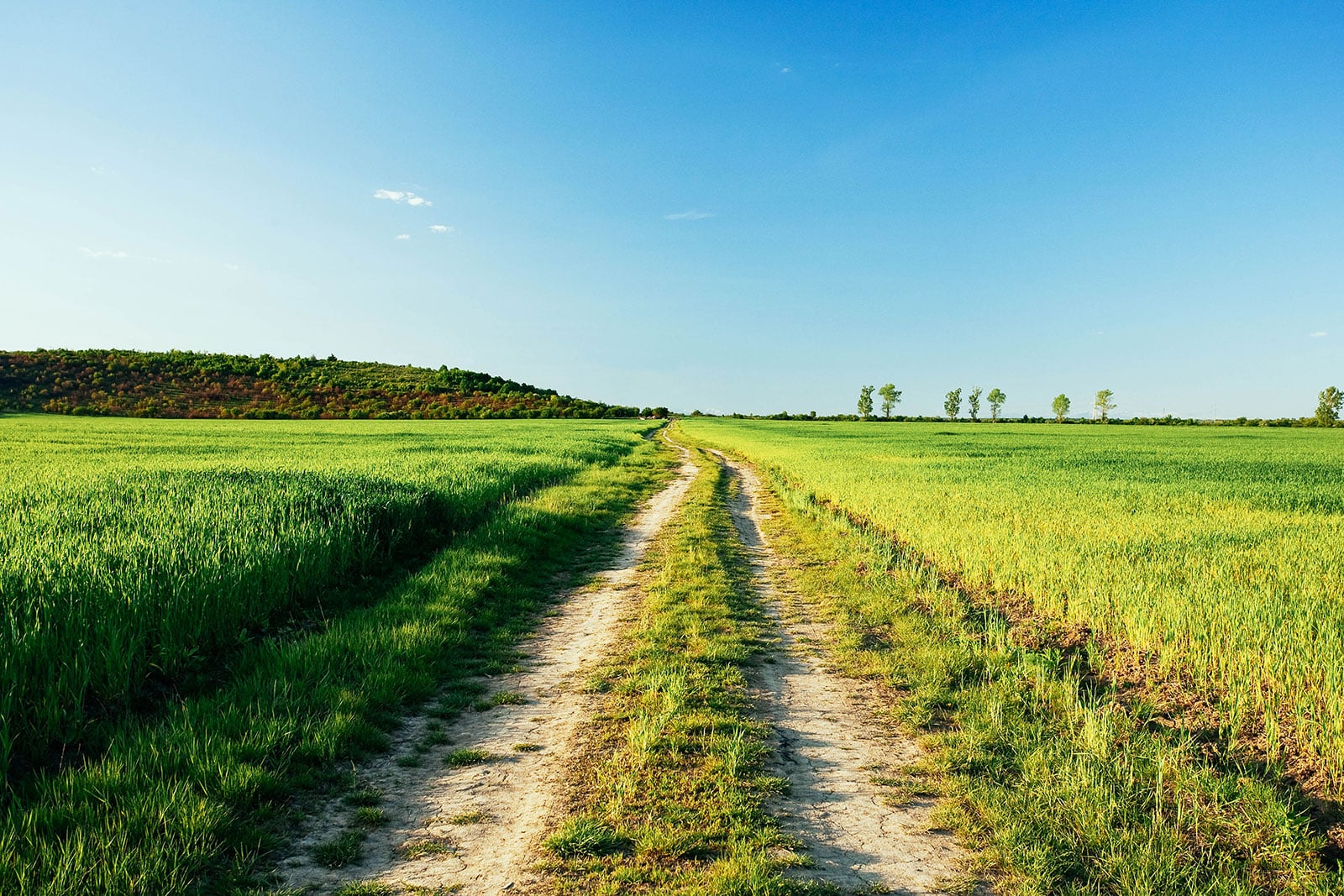
Road access considerations go beyond paved versus dirt. Believe it or not, it’s possible to buy a plot of land without having a legal way to drive to it, making you effectively landlocked.
So, how will you get to your lot? If you can’t access your property via municipally maintained roads, you’ll need to create a private road, which can be very expensive (and high maintenance—no one’s going to clear the snow or take care of those pot holes for you!).
In rural areas, this often means driving on someone else’s private property in order to get to your driveway, so you’ll need to secure an easement on a neighboring lot—if you can get it. Not all neighbors are friendly, and not all neighbors want to give up a slice of their property so you can access yours.
Speaking of easements… Utility companies may require easements on your property to access their infrastructure (and implement restrictions that affect your ability to fence or landscape around those easements). Or the community may have an easement through your property for a hiking or biking trail. Be sure to check if there are any easements you need to account for when designing your house.
5. Site challenges

The physical characteristics of the land will dictate what you can or can’t do, and how expensive it’ll end up being.
What does the land look like? Is the land flat or hilly? Is the entire parcel buildable, or is a portion of it covered in lava rocks? Challenges like these could require the specialized skills of an architectural and engineering firm instead of a draftsman/designer, thereby increasing the costs of developing the property (sometimes by a significant amount).
Does it need to be cleared? Clearing a densely forested lot may not be as easy as you think. There might be restrictions or regulations on what type or how many trees can be cleared, or you might need to plant new trees for any that you cut down.
Land mitigation (where you have to pay to replace or relocate plants and wildlife) can also become more of a hassle than it’s worth.
Are there any environmental hazards? Make sure the property you’re considering is free of all environmental hazards, such as contaminated water or soil. You might need to order an environmental study if one isn’t already on file.
Are there other risk factors? If the lot is in a high-risk wildfire zone, flood plain, or other natural hazard, this will present building challenges as well as additional costs in insurance (if it’s insurable at all).
Is there a septic feasibility study on file? If you’re buying land in a rural area that requires a septic system, has a septic feasibility study been done to determine what type of septic can be installed? (The cost difference between a standard septic and a specialized system can be in the tens of thousands.)
And while you’re testing your soil, pay attention to the composition and depth. Is the soil very sandy, or is it slow to drain? (This may be a problem if you plan to have a garden.) Is the soil nice and deep, or is there just a few feet of earth on top of bedrock? (You probably won’t be able to build a basement unless you haul in lots of fill dirt.)
6. Utility access
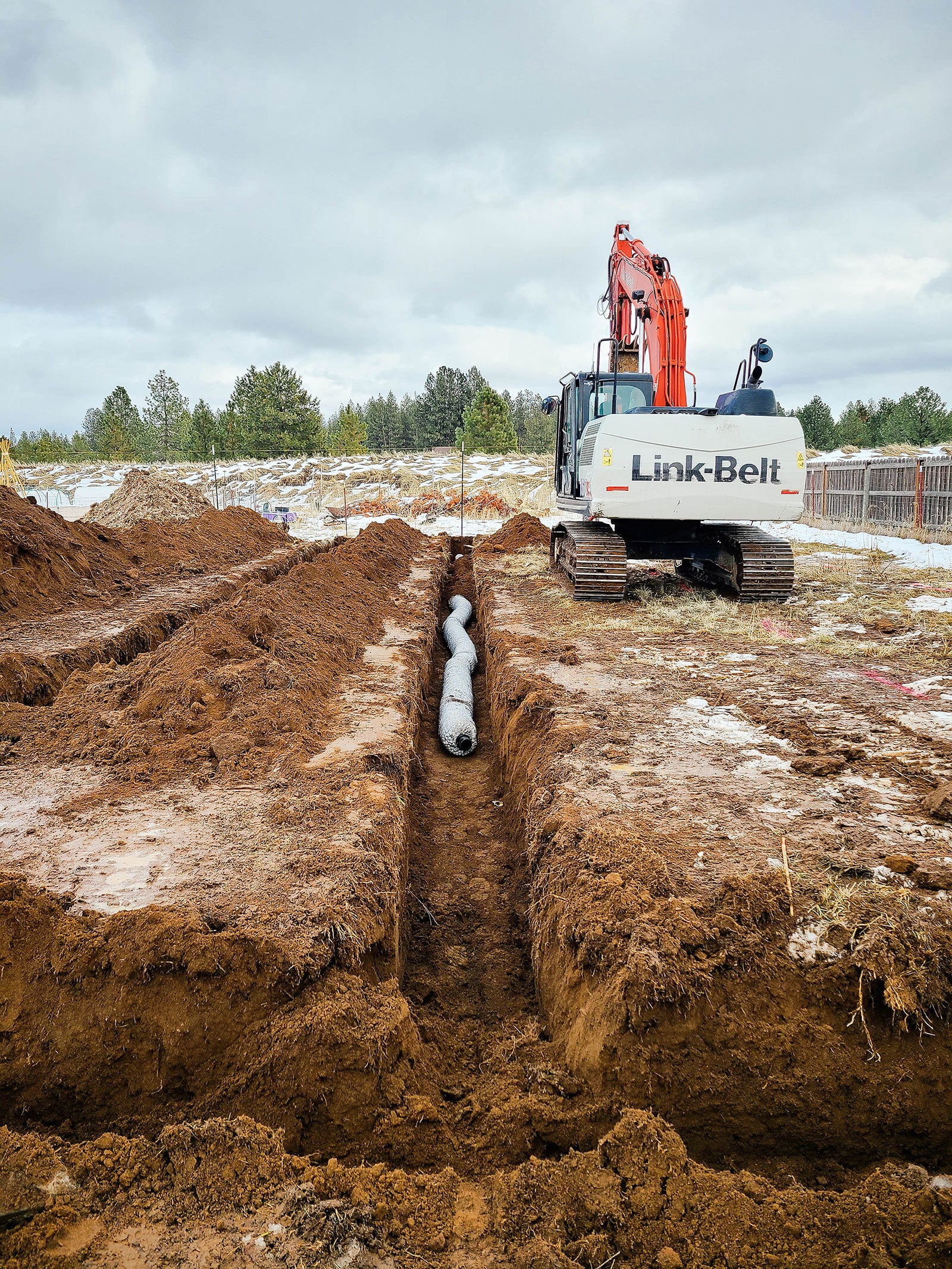
Speaking of septic, the cost (and ability) to bring all utilities onto your lot can easily make or break your decision. Connection fees are only one part of it; trenching the lines to your house can be a substantial cost if you’re farther back from the road or have natural obstacles that make it harder to bring in utilities.
Will your home be on septic or sewer? If the property doesn’t have an existing septic system, you’ll need to test the soil for feasibility and add the cost of septic installation to your budget. Rocky areas may also turn up a few surprises during excavation, so it’s not uncommon for the cost of septic to jump if you have to bring in the jackhammers.
Is there water and power at the street? If so, that’s good! But also consider how far you’ll have to bring those water and power lines in to the property. Trenching is often an underestimated cost if you have a long driveway, and in remote areas, hooking up to municipal utilities can be extremely expensive.
Get in touch with the local utility companies before putting in an offer to find out what the costs would be to connect water, electric, gas, waste, phone, cable, and other connections.
Are you looking to buy raw land? If you dream of going off-grid, make sure you factor in the cost of digging a well and installing septic and solar panels, not to mention their ongoing maintenance.
In this day and age, you also need good cell reception. Not having it will probably make your life miserable if you frequently need to make calls or go online.
7. Permitting
Permitting wasn’t something I gave much thought to at the beginning of our land search, but quickly realized it’s a pretty important piece of the whole pie.
First, were there previous permits? What I like to do when I first find a potential lot is look for permits that may have been issued before. Your local building department will have a record of all submittals, and if you see that someone else tried to build on the property but failed, you may want to investigate further.
In Central Oregon, we have an online system called Deschutes Dial where you can plug in any address and pull up public property information, such as plot plans, zoning, soil reports, permits, assessments, and other things you should know while doing your due diligence. Other municipalities have similar systems: Google [your city] building permits or [your city] building records to start your search.
You can also call your local building department to find out how to access these records. Building departments go by a variety of names: Community Development, City Planning, Planning Division, Department of Building and Safety, or anything along those lines.
What should you expect to pay? Depending on where you live, permits can be a surprising part of the project budget. We had to pay for a variety of permits (demolition, septic evaluation, septic abandonment, septic installation, road access, structural and plot plan review) in addition to our regular building permit. All of these permits totaled nearly $13,000, which had to be paid before our construction loan closed.
Permits and costs will vary based on what you plan to do on your property, so make sure you call the building department for an estimate of fees before you get too far ahead. These types of soft costs can be paid from the construction loan at closing if they were included in the budget, but you do need to pay for them out-of-pocket first.
How long do permits take to issue? Depending on your municipality, permits can take anywhere from a few weeks to a few months, and your architect/designer or general contractor should know what the current timeframes are (after all, they’re the ones who deal with the building department on a weekly basis). If the lot is tricky to build on or the house design is unusual, be prepared to wait longer for the plot plans to be reviewed and approved.
Generally, the permitting process can happen in tandem with the construction loan process, but it never hurts to submit for permits earlier to make sure building can begin as soon as your project is fully funded.
8. Financial considerations
Unless you’re paying all cash, buying land is not as straightforward as buying a house. It can also incur additional costs that you might not find out about until after you’ve already bought the land.
Don’t skimp on a real estate attorney. If you aren’t working with a knowledgeable real estate agent, it’s always wise to hire a real estate attorney before you make an offer on land. An attorney can assist with due diligence, review your purchase contract, note the fine print and spot any potential complications before they arise.
Don’t skip this step—the relatively minimal cost of an attorney can save you lots of headaches down the line.
Sometimes land (particularly raw land) is seller financeable, in which case you should definitely hire a lawyer to review the terms of your transaction.
Do you need a lot loan to make the purchase possible? Compare the rates and requirements at several banks. Lot loans are riskier for banks to take on, so they’re not as easy to get. They require higher down payments and have higher interest rates with shorter repayment terms.
Learn how a construction loan works in my detailed guide that covers everything you need to know before you walk into a bank. If you work for yourself, find out what to do to get approved for a construction loan while being self-employed.
A lot loan can often be bundled with a construction loan if you’ll start building on the land shortly after buying it, so this is worth exploring with a bank to potentially save on closing costs (and increase your chances of being approved for a loan). Generally, the more improved the land is, the lower your borrowing costs will be.
Don’t let property taxes be a nasty surprise next year. Remember that your taxes will go up once you build, and rates for new construction may differ from rates for older homes, even if they’re comparable in value. Make sure you know what the property tax rates are in your area for brand-new homes. (This was something we didn’t learn until halfway through the construction loan process!)
Despite all this, don’t be deterred from buying your dream property. Just go into it well-informed and your pocketbook (and sanity) will thank you!
View the Web Story on things to know before buying land.


